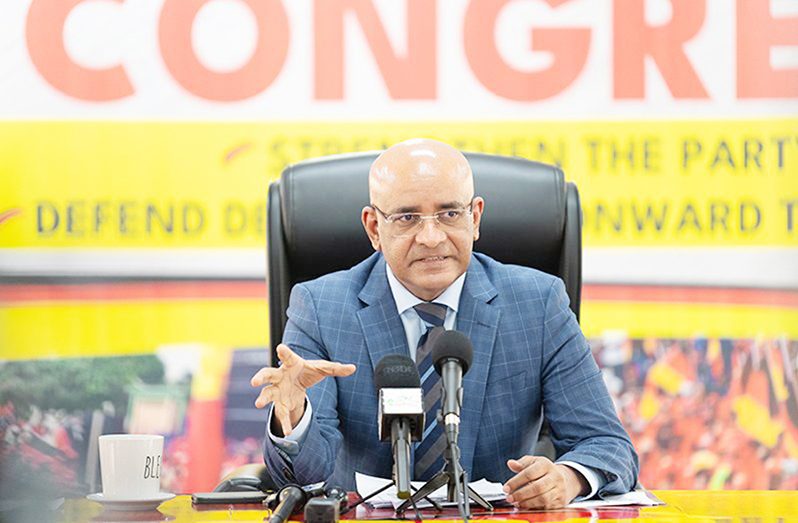-VP Jagdeo says as demand for oil to decline in the future
WITH the energy transition advancing, Guyana is sparing no effort to “lock in” those early investments in its rapidly growing oil and gas sector, Vice President, Dr Bharrat Jagdeo has said.
At the time, Jagdeo was referencing the International Energy Agency (IEA) reporting that within the upcoming years, there will be a decline in the oil demand. However, Guyana is not letting the window of opportunities close.
The Vice President during a press conference at the Office of the President (OP) on Thursday last outlined the importance of planning for the future.
While underscoring its importance, he highlighted that Guyana previously found itself indebted in the 90s owing to the People’s National Congress Reform’s (PNC/R) imprudent strategies while it was in government.
“So, you have to be careful to ensure that whatever you commit to, particularly on the recurrent side, wages other recurrent expenditure, that it can be sustained based on future revenue flows, so that’s the first point. So, I think when people see this, they should have cause to rethink what many are advocating,” the Vice President said.
As it relates to the IEA’s predictions regarding the future of fossil fuels, beyond that date, one will not attain investments within that sector since there will be no demand for it.
“So, nobody will invest because their assets would be stranded and they would make huge financial losses. So, what you have to do is to make sure that even before they fall off in demand, which is coming, and as predicted by the IEA, that you secure your investments early.”
Examining Guyana’s commitment to this, Jagdeo said that Guyana has locked in six Floating Production Storage and Offloading (FPSO) vessels, which according to him will take the nation to 1.3 billion barrels. As a result, over the period, this would amount to around US$50 billion of investments.
On that note, the Vice President said, “Very, very few countries in the world have been able to secure that investment or to do it on for fossil fuel. Suriname is still to start. They may start producing if everything goes well and they make a decision to invest as investors by the end of this year or so to do a project.”
Additionally, according to the latest edition of the IEA’s annual medium-term market report, despite the slowdown in growth, global oil demand is still forecast to be 3.2 million barrels per day higher in 2030 than in 2023 unless stronger policy measures are implemented or changes in behaviour take hold.
It also noted that producers outside of OPEC+ are leading the expansion of global production capacity to meet this anticipated demand, accounting for three-quarters of the expected increase to 2030. The United States alone is poised to account for 2.1 million barrels per day of non-OPEC+ gains, while Argentina, Brazil, Canada and Guyana are poised to contribute a further 2.7 million barrels per day.
At a previous press conference, the Vice President explained that at maximum production of its oil and gas resources, Guyana will still remain a carbon sink nation.
At the time, he was defending the government’s strategic decision to utilise its oil resources while simultaneously maintaining its forest. He reminded that the country boasts over 87 per cent of standing forest.
Guyana’s forest stores approximately 19.5 gigatonnes of carbon with the country maintaining a low deforestation rate, Jagdeo noted.



.jpg)








